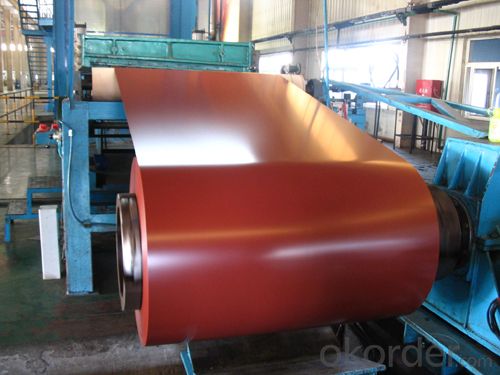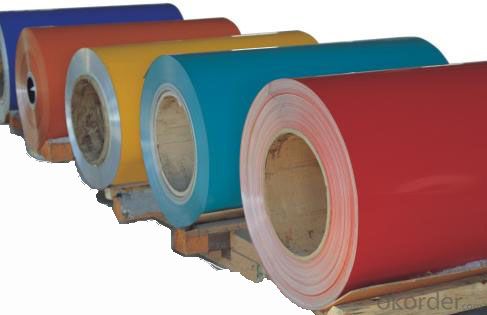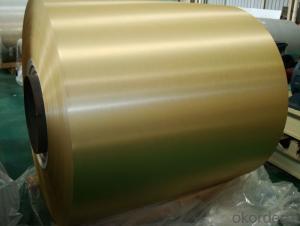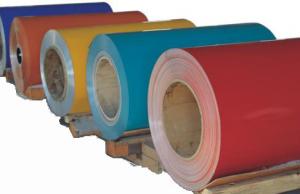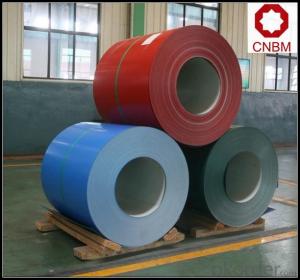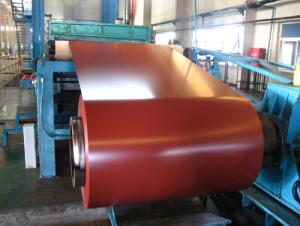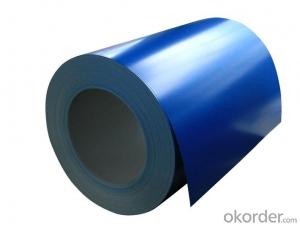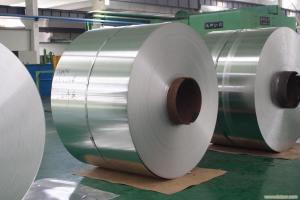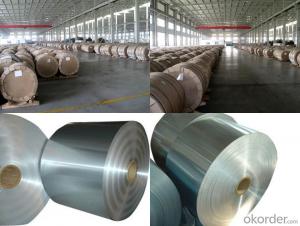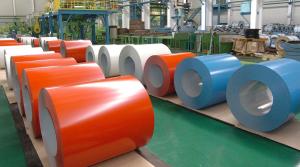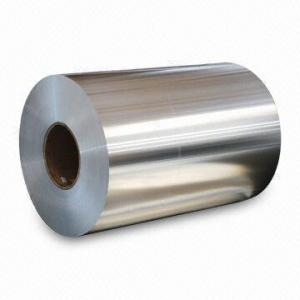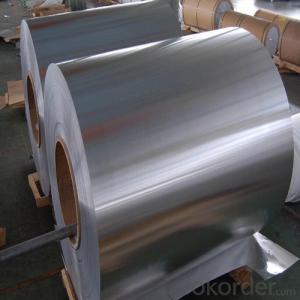Streamwood IL Aluminum Coil Anodizing - PE Coated Aluminium Coil for Curtain Wall AA3003
- Loading Port:
- China Main Port
- Payment Terms:
- TT or LC
- Min Order Qty:
- -
- Supply Capability:
- -
OKorder Service Pledge
OKorder Financial Service
You Might Also Like
1.Structure of Product Description
PE Coated aluminium coils are widly used in decoration field.Now we mainly exported to Asian countries and European countries.For the paint, it depends on the using evironment. If you use in the open air, we recommend the PVDF coated aluminium coils. This kind of painting can last 15-20 years. If you use in the room, we recommend PE coated aluminium coils. The price is much more competitive.
2. Main features of the product
a.Competitive price---We have our own mills and can produce mill finished aluminium coils, so we can control the production cost better.
b.Professional after-sale service---We have more than 15 years exportation experience and you need not worry about the exporation problems.
c.Fast delivery time---We can control the delivery time within 35 days.
3.Image
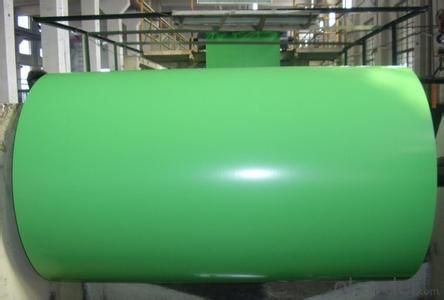
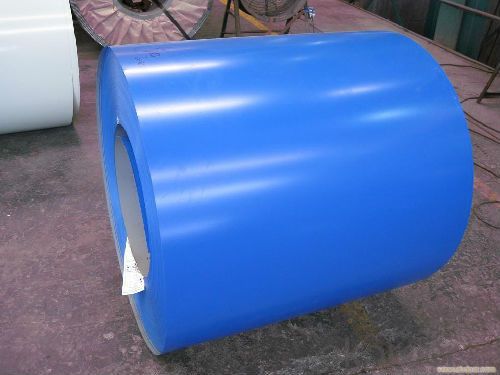
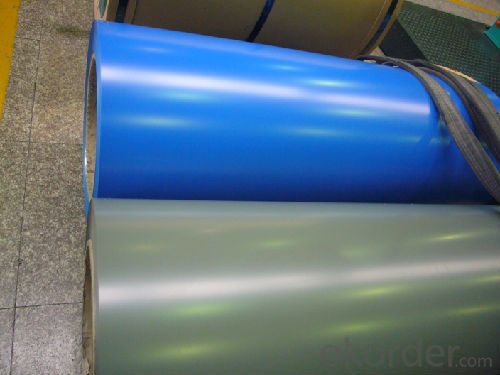
4. Product Specification
| Alloy | Temper | Coating Thickness | Coil ID | Coil Weight |
| AA3003 | H14 | 22-25 MICRON | 505MM | 2.5 TONS |
5.FAQ:
What is the quality standard?
---Usually our standard is GB3880-2006
What is the largest width?
---It is 2300mm
What is the MOQ?
---Usually we can accept 5 tons.
- Q: What is the maximum width-to-thickness ratio for aluminum coils?
- The maximum width-to-thickness ratio for aluminum coils can vary depending on the specific application and industry standards. However, a common maximum ratio is typically around 30:1.
- Q: What are the different coil slitting options available for aluminum coils?
- Aluminum coils can be slit in several ways to meet specific requirements and achieve desired outcomes. 1. The most common method is single-loop slitting, where the coil is fed through rotating circular knives to make a single cut along its length. This creates narrower coils with the desired width. 2. Double-loop slitting is similar to single-loop slitting, but the coil is passed through the circular knives twice, resulting in two narrower coils. This method is preferred when precise width tolerances are necessary. 3. Rotary slitting involves feeding the coil through rotating knives that make multiple cuts simultaneously. This allows for the production of numerous narrow strips in one pass, making it ideal for high-speed production. 4. Crush cutting utilizes opposing circular knives, with one stationary and the other rotating. The knives crush and shear the aluminum coil, providing precise slitting. This method is suitable for thin coils and applications that require minimal burr. 5. Shear slitting uses upper and lower straight knives to cut through the coil. The knives move in opposite directions, creating a shearing action that produces clean and accurate slits. This method is preferred for thicker coils. 6. Laser slitting is a modern and highly precise method that employs a laser beam to make cuts in the aluminum coil. It offers exceptional accuracy and clean edges, making it suitable for high-end applications with strict tolerances. Each of these coil slitting options possesses distinct advantages and is selected based on factors such as required width tolerances, coil thickness, production speed, and desired edge quality. Manufacturers choose the most appropriate method based on their specific needs and the characteristics of the aluminum coils they work with.
- Q: Can aluminum coils be used in architectural mesh applications?
- Yes, aluminum coils can be used in architectural mesh applications. Aluminum is a lightweight and durable material that is corrosion-resistant, making it suitable for various architectural designs. The flexibility of aluminum coils allows for easy customization and installation in different mesh patterns, providing both functional and aesthetic benefits in architectural applications.
- Q: Are there any specific regulations for the transportation of aluminum coils?
- Yes, there are specific regulations for the transportation of aluminum coils. These regulations aim to ensure the safe handling and transport of aluminum coils to prevent any accidents or damage. Some of the key regulations include: 1. Packaging requirements: Aluminum coils should be properly secured and packaged in suitable containers to prevent shifting, damage, or falling during transportation. This may include the use of strapping, banding, or shrink-wrapping. 2. Weight restrictions: There are weight restrictions on the transport of aluminum coils, which vary depending on the type of transportation mode being used. These restrictions are in place to ensure the stability and safety of the vehicle during transit. 3. Loading and unloading procedures: Proper loading and unloading procedures should be followed to minimize the risk of damage to the coils and to ensure the safety of workers. This may involve the use of specialized equipment such as cranes or forklifts. 4. Hazardous materials regulations: In some cases, aluminum coils may be considered hazardous materials due to their flammability or other characteristics. If this is the case, additional regulations and requirements may apply, such as proper labeling, documentation, and handling procedures. 5. Transportation permits: Depending on the size, weight, and destination of the aluminum coils, specific permits or licenses may be required for their transportation. These permits ensure compliance with local, state, and federal regulations. It is important for companies involved in the transportation of aluminum coils to be aware of and comply with these regulations to ensure the safe and efficient transport of the coils. Failure to adhere to these regulations can result in fines, penalties, or even legal consequences.
- Q: Can aluminum coils be used for pharmaceutical packaging?
- Certainly, pharmaceutical packaging can make use of aluminum coils. Aluminum is widely preferred for such purposes owing to its numerous advantageous properties. Notably, its lightweight nature, resistance to corrosion, and exceptional barrier properties render it exceptionally suitable for safeguarding pharmaceutical items against external elements like moisture, oxygen, and light. Moreover, aluminum coils can be conveniently fashioned into various shapes and sizes, thereby offering flexibility to meet diverse packaging requirements. It is also worth mentioning that aluminum is both non-toxic and non-reactive, thereby guaranteeing the safety and overall quality of pharmaceutical products.
- Q: Can aluminum coils be used in automotive body panels?
- Yes, aluminum coils can be used in automotive body panels. Aluminum is lightweight, corrosion-resistant, and offers excellent strength-to-weight ratio, making it an ideal material for automotive applications. Its use in body panels helps improve fuel efficiency and reduce vehicle weight while maintaining structural integrity.
- Q: How are aluminum coils used in the production of HVAC components?
- Aluminum coils play a crucial role in the production of HVAC (Heating, Ventilation, and Air Conditioning) components. These coils are used in the heat transfer process of HVAC systems, where they assist in both heating and cooling applications. In HVAC systems, aluminum coils are typically employed in air conditioning units and heat pumps. They are an integral part of the refrigeration cycle, which allows for the transfer of heat from one area to another. The coils serve as the key component in the heat exchanger, responsible for absorbing heat from the indoor air during cooling or releasing heat into the indoor air during heating. The process starts with the refrigerant, a substance that circulates through the coils, absorbing and releasing heat. When the HVAC system is in cooling mode, the aluminum coils act as an evaporator. The warm air from the indoor space passes over the coils, and the refrigerant within the coils absorbs the heat, cooling down the air. This cooled air is then circulated back into the room, providing a comfortable environment. On the other hand, during heating mode, the aluminum coils operate as a condenser. The refrigerant, which has absorbed heat from the outside environment, passes through the coils. The cooler air from the indoor space flows over the coils, causing the refrigerant to release its heat. This heat is then distributed throughout the room, ensuring a warm and cozy atmosphere. The use of aluminum coils in HVAC systems offers several advantages. Aluminum is lightweight, which makes the HVAC units more portable and easier to install. Additionally, aluminum has excellent thermal conductivity, allowing for efficient heat transfer. This results in improved energy efficiency and reduced operating costs of the HVAC system. Moreover, aluminum coils are highly resistant to corrosion, ensuring their durability and longevity. They can withstand harsh environmental conditions, such as humidity and exposure to chemicals, without deteriorating. This makes aluminum coils a reliable and cost-effective choice for HVAC manufacturers. In conclusion, aluminum coils are essential components in the production of HVAC systems. They facilitate the heat transfer process, enabling efficient cooling and heating functions. With their lightweight nature, excellent thermal conductivity, and corrosion resistance, aluminum coils contribute to the overall performance, energy efficiency, and durability of HVAC units.
- Q: ok me and my father are trying to make thermite. we have the iron oxide but the aluminum we only have paste and i was wondering would it work the same as if we had the powder.and if it is differnt will it work for the thermite and what will it take to light it.
- Etch A Sketch Thermite
- Q: wood aluminium windows?
- Does this mean the vinyl or aluminum is laminated over the wood? I do not know of the aluminum over owod. Aluminum transfers heat and cold very well, so vinyl is much better. Vinyl does not oxidize and is a standard on windows today. There are viyl clad wood windows, for people who like real wood inside, but none of the maintenance headaces of real wood outside.
- Q: What are the storage life and shelf life of aluminum coils?
- The storage life and shelf life of aluminum coils can vary depending on various factors such as the storage conditions and the specific type of aluminum alloy used. Generally, aluminum coils have a relatively long storage life and shelf life. In terms of storage life, aluminum coils can be stored for an extended period of time without significant degradation in their quality or performance. However, it is important to store them in a dry and well-ventilated area to prevent corrosion. Moisture can cause oxidation and corrosion, which can affect the integrity and durability of the aluminum coils. As for the shelf life, aluminum coils can remain in good condition and retain their functional properties for an extended period of time when stored properly. The exact shelf life will depend on the specific application and the intended use of the aluminum coils. To ensure the longevity of aluminum coils, it is recommended to follow the manufacturer's guidelines for storage and handling. Additionally, regular inspections and maintenance can help identify any signs of corrosion or damage and take appropriate measures to prevent further deterioration.
Send your message to us
Streamwood IL Aluminum Coil Anodizing - PE Coated Aluminium Coil for Curtain Wall AA3003
- Loading Port:
- China Main Port
- Payment Terms:
- TT or LC
- Min Order Qty:
- -
- Supply Capability:
- -
OKorder Service Pledge
OKorder Financial Service
Similar products
Hot products
Hot Searches
Related keywords




